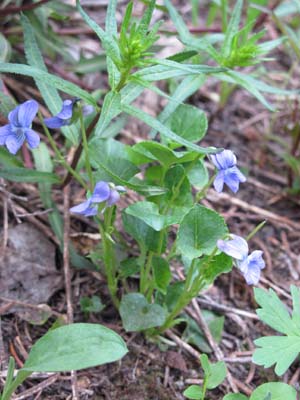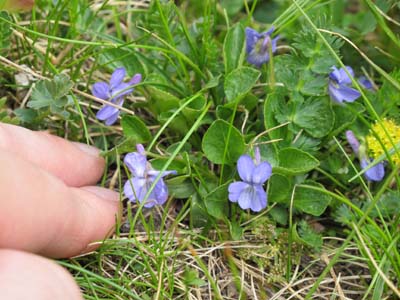Evolutionary ecology of ecotypic differentiation in the Viola adunca (Violaceae) complex in the San Juan Mountains.


|
Senior Seminar Documents
The Biology Department Senior Seminar Poster Session will be December .
Biology Department guidelines for poster preparation
Directions for poster preparations and sample posters - Provided by Dr. Cynthia Dott
Creating a poster in PowerPoint
|
Ecotypes are discrete genetic forms of species which generally correlate to specific environmental variables. In an evolutionary context these ecotypes can represent an early stage in the process of speciation as populations differentiate along environmental gradients. Viola adunca is a widespread purple-blooming violet extending across much of western North America. In the Southern Rockies it can occur in one of two forms depending upon elevation. Its most common form, a lowland ecotype, occurs in the understory of sheltered woodlands and develops large leaves and a stem 1-3 dm in height. In exposed alpine tundra environments V. adunca occurs as a dwarf form with small leaves and may only be a few cm in height. The ecotype is so distinct from the lowland form that alpine populations have sometimes been treated as a taxonomically discrete taxon, V. bellidifolia. As ecotypic differentiation can be an early stage in the process of speciation we want to investigate the patterns of ecotypic differentiation in V. adunca within the local area to understand how these ecotypes are segregated and determine if there is sufficient evidence to recognize these ecotypes as separate taxa. We will be utilizing a variety of different tools to look at both the genotypic and phenotypic divergence of these populations. Using population genetics we will be able to use microsatellite markers to see if gene flow occurs in a stratified sense only among populations of similar environments or if gene flow is still occurring among adjacent but different ecotype populations. A difference in cytotype has been suggested to occur between these two ecotypes but it has never been tested. Using flow cytometry we should be able to determine the validity of this claim to cytotype differences. As violets are partially outcrossing species pollinator behavior may have as much of a role to play in segregating ecotypes as any abiotic factor. Most Viola are pollinated by various bee species, however pollinators can vary from specialist species to various generalists. While pollination in Viola has been well studied, our knowledge comes principally from lowland species. Very little is known regarding the pollination of alpine violets and thus identification of pollinators and examination of their ability to move pollen would be of value beyond this specific project. Additional projects in which phenotypic traits are examined in a comparative fashion including detailed study of plant morphology within and among populations and phenological changes could also be carried out if individual students were interested.
Seminar Requirements The winter Seminar section will give us time to put together individual proposals and investigate how each sub-project within the larger project will be carried out. We will also spend time looking at some of the classic and modern research in ecotypic differentiation in plants as a means of learning more about the field of Evolutionary Ecology. Participation in this section will likely require a combination of field and laboratory work. It will involve some commitment of time over the summer months (particularly May and June) since this is the only time the plants are alive and blooming. All participants will need to go to the field (in both middle-elevation and alpine tundra environments) at least a few times to collect samples for analysis. This will involve rugged hiking. Some individual projects could involve extended collecting and/or camping in the backcountry while other projects could involve extensive laboratory work extracting DNA, performing PCR reactions and analyzing genetic data.Prerequisite courses: As speciation can be studied from multiple angles that cut across the divisions of our curriculum students with varying backgrounds are welcome. I would strongly recommend Systematic Botany as a prerequisite course although students with a strong background in molecular genetics who are interested in the application of molecular biology to problems in evolution are welcome to apply.
|